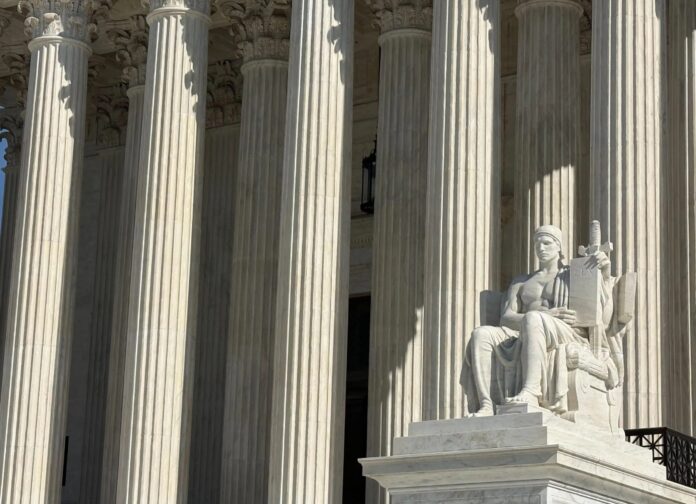On Friday, June 20, the Supreme Court also released the following opinions:
— In Esteras v. United States, the justices considered whether courts weighing a revocation of supervised release should address certain sentencing factors, such as retribution, that are not listed in the law concerning supervised release but that are part of the law governing sentencing.
In a 7-2 decision by Justice Amy Coney Barrett, the court held that judges must base their supervised release decisions on only the sentencing factors that are enumerated in the supervised release law. “Congress’s decision to enumerate most of the sentencing factors while omitting” the sentencing law’s guidance considering retribution “raises a strong inference that courts may not consider that factor when deciding whether to revoke a term of supervised release. This inference is consistent with both the statutory structure and the role that supervised release plays in the sentencing process,” Barrett wrote.
Justices Sonia Sotomayor and Ketanji Brown Jackson concurred in the opinion in part and concurred in the judgment. Sotomayor said that “district courts revoking a term of supervised release should not consider retribution for any purpose,” while Jackson stated that the opinion was overly complicated, as it considered matters “unnecessary to the outcome of this litigation.”
Justice Samuel Alito filed a dissenting opinion, in which he was joined by Justice Neil Gorsuch. According to Alito, “[n]either the statutory text, the interpretive canon on which the Court relies, nor the structure of the Act supports the Court’s interpretation.”
— In McLaughlin Chiropractic Associates v. McKesson Corporation, the justices considered whether courts must defer to a federal agency’s interpretation of a statute when presented with a civil enforcement proceeding under the Telephone Consumer Protection Act. The case specifically centered on the Federal Communications Commission’s decision that the TCPA’s prohibition on unsolicited telephone fax advertisements does not apply to online fax services.
In a 6-3 decision by Justice Brett Kavanaugh, the Supreme Court held that the district court was not bound by the FCC’s decision. “The Hobbs Act does not preclude district courts in enforcement proceedings from independently assessing whether an agency’s interpretation of the relevant statute is correct. Here, therefore, the District Court should interpret the TCPA under ordinary principles of statutory interpretation, affording appropriate respect to the agency’s interpretation,” Kavanaugh wrote.
Justice Elena Kagan filed a dissenting opinion, in which she was joined by Sotomayor and Jackson. Kagan argued that the majority opinion was incorrect “as a matter of ordinary statutory interpretation. The text of the Hobbs Act makes clear that litigants who have declined to seek pre-enforcement judicial review may not contest the statutory validity of agency action in later district-court enforcement proceedings.”
— In Diamond Alternative Energy, LLC v. Environmental Protection Agency, the court considered whether fuel producers have standing to sue the EPA over its approval of California regulations that aim to decrease emissions by requiring the production of more electric vehicles and fewer gas-powered vehicles.
In a 7-2 decision by Kavanaugh, the court held that fuel producers have a legal right to sue, known as standing, reversing a decision by the U.S. Court of Appeals for the District of Columbia Circuit. “This case concerns only standing, not the merits. EPA and California may or may not prevail on the merits in defending EPA’s approval of the California regulations. But the justiciability of the fuel producers’ challenge to EPA’s approval of the California regulations is evident,” Kavanaugh wrote. This was partly the case, according to Kavanaugh, because “invalidating the California regulations would likely redress at least some of the fuel producers’ monetary injuries.”
Sotomayor and Jackson each filed dissenting opinions. Sotomayor focused on a factual dispute at the circuit level, explaining that she would “have vacated the case and remanded it to the D. C. Circuit to reconsider its redressability analysis.” Similarly, Jackson wrote that the Supreme Court should not have taken up the case. Jackson also stated that the court “rests its decision on a theory of standing that the Court has refused to apply in cases brought by less powerful plaintiffs.”



